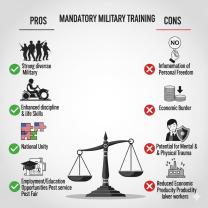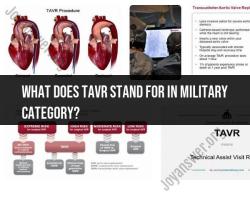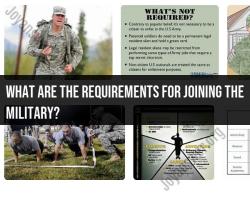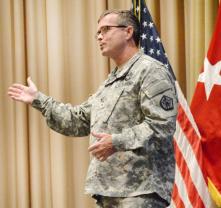What are the steps in the Troop Leading Procedures?
relevant factors. This reconnaissance may involve leaders and subordinates conducting on-the-ground assessments.
6. Complete the Plan:
- Based on the information gathered during the reconnaissance, complete the planning process. Develop detailed plans, including tasks for subordinate units, timelines, and specific instructions for execution.
7. Issue the Operations Order (OPORD):
- Brief subordinates on the plan using the Operations Order. The OPORD provides a detailed and organized presentation of the plan, including the commander's intent, concept of operations, tasks, coordinating instructions, and other relevant information.
8. Supervise and Refine:
- Supervise the execution of the plan and make necessary refinements based on changing conditions or unforeseen circumstances. Leaders continuously monitor the situation and adjust the plan as needed.
9. Execute:
- Execute the plan according to the established timeline and instructions. Subordinates carry out their assigned tasks, and the leader maintains situational awareness to make real-time decisions.
10. Evaluate the Plan:
- Continuously assess the effectiveness of the plan during execution. Evaluate whether the desired results are being achieved and adjust the plan as necessary.
11. Reconnaissance and Surveillance:
- Maintain a focus on reconnaissance and surveillance throughout the operation. Gather updated information on the enemy, terrain, and other factors that may impact the mission.
12. Report and Update:
- Provide timely and accurate reports to higher headquarters. Keep higher headquarters informed of the unit's progress and any changes to the situation.
13. Consolidate and Reorganize:
- After completing the mission, consolidate forces, reorganize, and prepare for follow-on missions. This step is crucial for maintaining combat effectiveness and readiness.
14. Prepare for Follow-on Missions:
- Anticipate and prepare for future missions. Conduct planning and coordination to ensure a smooth transition to the next phase of operations.
Note:
The Troop Leading Procedures are a dynamic and iterative process. Leaders may need to revisit earlier steps based on new information or changes in the situation. Flexibility and adaptability are key components of effective leadership in military operations. Additionally, variations in the specific steps and terminology may exist based on military branch, doctrine, and specific circumstances.
What specific steps constitute the Troop Leading Procedures in military operations?
The Troop Leading Procedures (TLP) are a standardized framework used by the military to plan, prepare, and execute operations at the company level and below. They consist of eight sequential steps:
1. Receive the Mission:
- Understand the mission objective, enemy situation, friendly forces, and time constraints.
- Clarify any uncertainties or ambiguities with higher command.
2. Issue a Warning Order:
- Inform subordinates of the upcoming mission in a concise and timely manner.
- Briefly outline the mission objective, time and location, enemy situation, friendly forces, and initial tasks.
- Allow subordinates time to prepare and ask questions.
3. Make a Tentative Plan:
- Analyze the mission and conduct a mission analysis using military decision-making processes.
- Consider available resources, terrain, enemy capabilities, and friendly forces.
- Develop a preliminary plan with tasks, formations, movement routes, and timelines.
4. Initiate Movement:
- Issue detailed orders to subordinates, including specific tasks, formations, movement routes, timelines, and communication procedures.
- Initiate movement of personnel and equipment towards the objective area.
- Maintain situational awareness and adapt to changing circumstances.
5. Conduct Reconnaissance:
- Gather information about the enemy, terrain, and other factors that may affect the mission.
- Verify intelligence reports and confirm assumptions made during planning.
- Adapt the plan as necessary based on new information.
6. Complete the Plan:
- Re-evaluate the situation and refine the plan based on reconnaissance findings.
- Issue final orders to subordinates, ensuring clarity and understanding.
- Conduct rehearsals and drills to prepare for the mission execution.
7. Issue the Order:
- Deliver the final order to all personnel in a clear and concise manner.
- Answer any questions and ensure everyone understands their role in the mission.
- Address any concerns or anxieties before proceeding.
8. Supervise and Refine:
- Continuously monitor the execution of the mission.
- Address unforeseen challenges and adapt the plan as necessary.
- Provide support and guidance to subordinates.
- Maintain effective communication throughout the operation.
Additional Notes:
- The specific steps and sequence of TLP may vary depending on the situation and the level of command.
- TLP is a dynamic process, and leaders need to be flexible and adaptable to changing circumstances.
- Effective communication and coordination are crucial for the success of any military operation.
Further Resources:
- FM 6-0, Commander and Staff Officer Guide
- ATP 3-21.8, Infantry Platoon and Squad
- Army Training and Doctrine Command (TRADOC) website













